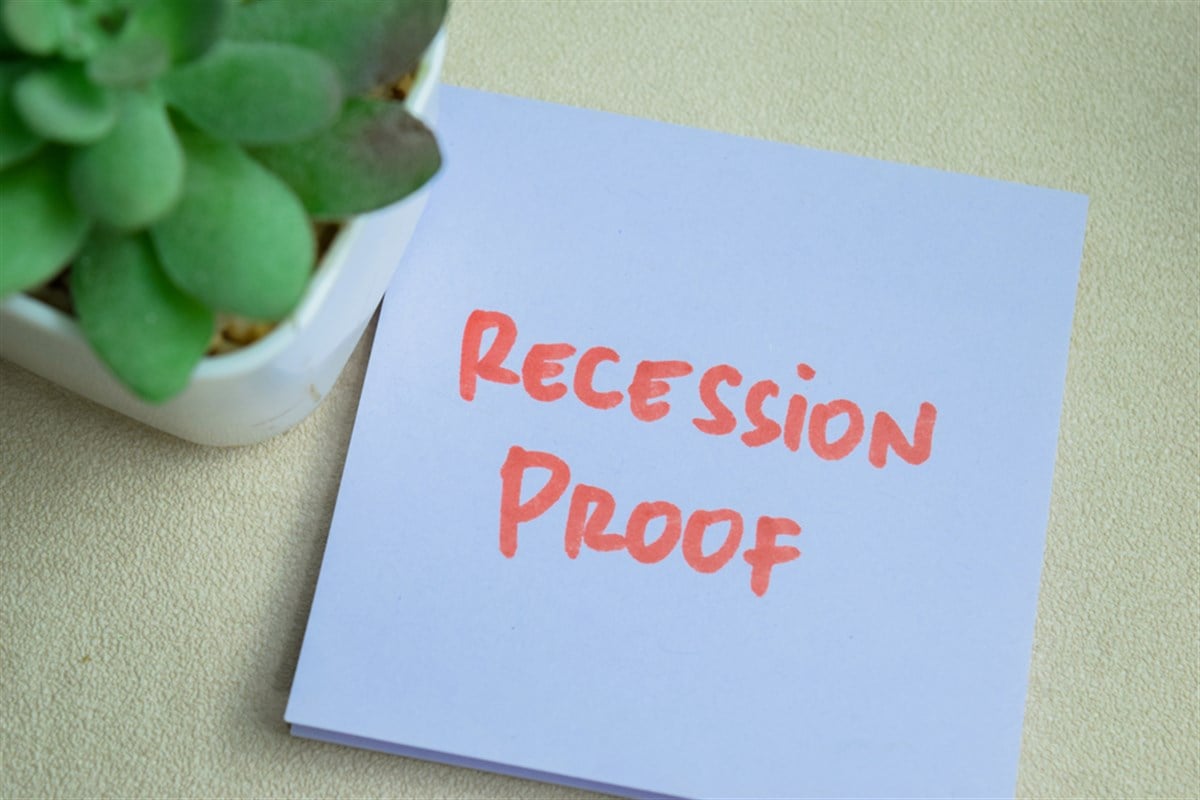
The fear of an economic recession has been ever prevalent for years. Investors constantly wonder how to protect their portfolios in the event of a recession. Certain industries have historically and logically shown to be recession-resistant because they are essential.
Healthcare is a necessity regardless of an economic recession or expansion. While the medical sector is vast, there are certain constants when it comes to the healthcare industry. Insurance is another industry that remains resilient despite economic backdrops. Here are two recession-resistant stocks you can consider for your portfolio, especially in a down market.
HealthEquity: Leading Platform for Health Savings Account Management
HealthEquity Inc. (NASDAQ: HQY) provides platforms for businesses and consumers to administer and manage Health Savings Accounts (HSAs) and healthcare-related financial tasks. It enables employers to administer HSAs and consumer-directed benefits (CBDs). Employers can reduce benefit costs as well as manage expenses and track spending.
Consumers can use its convenient mobile app to manage their HSA contributions, distributions and investments. The platform also enables payment solutions, personalized benefits and investment tools to allocate remaining funds. The company has over 9 million consumers using the platform, making it the #1 HSA administrator. It's the benefit administrator to employers of 1 in 7 working Americans.
The platform and mobile app have additional quality-of-life features like its commuter functions that enable proactive parking management. It helps manage dependent care flexible spending accounts (DCFSA) to plan out daycare, elder care, and before and after school programs for dependents. Businesses can administer employer-funded lifestyle-spending accounts (LSA) to add more value to their benefits packages and attract and retain talent.
HealthEquity's Business Is Still Growing by Double-Digits
HealthEquity posted fiscal second-quarter 2025 earnings-per-share (EPS) of 86 cents, beating consensus analyst estimates by 16 cents. Non-GAAP net income grew 67% YoY to $76.3 million. Revenues for the quarter surged 23.1% YoY to $299.93 million, again beating consensus estimate of $285.13 million.
The company grew its total account by 9% YoY to 16.3 million total HSA and complementary CSDs. The company authorized a $300 billion stock buyback program. HAS accounts rose 15% YoY to 9.4 million. Total HSA assets rose 27% to $29.5 billion.
HealthEquity Issues Upside Guidance
HealthEquity expects fiscal full year 2025 EPS between $2.98 and $3.14 versus $3.00 consensus estimates. Revenues are expected between $1.165 billion to $1.185 billion versus $1.17 billion analyst estimates.
HealthEquity CEO Jon Kessler commented on the quarter, "Momentum in both topline growth and margin expansion allows us to raise guidance, accelerate our platform investments, launch Health Payment Accounts and announce a $300 million share repurchase authorization."
Guidewire: Essential Software for Property and Casualty Insurers
Insurance companies have deep pockets. Guidewire Software Inc. (NYSE: GWRE) is essential software for property and casualty (P&C) insurers functioning as an essential fixture of an insurer’s infrastructure. Guidewire’s cloud-based insurance suite offers policy, pricing, billing and claims management for insurance companies.
Guidewire has over 540 clients spanning 40 countries. Some of the insurance companies include Allianz SE (OTCMKTS: ALIZY), Zurich Insurance Group, Core Mutual and Capital Insurance Group. Guidewire is a safe-haven play, especially during recessionary periods.
IT Spending Slowdown Doesn’t Impact Guidewire’s Sweet Spot
Software providers like Salesforce Inc. (NYSE: CRM), Palo Alto Networks Inc. (NASDAQ: PANW) and ServiceNow Inc. (NYSE: NOW) have been voicing the changing climate with enterprise customers scrutinizing deals and elongating the sales cycle due to the weakening macroeconomic climate.
Well, that doesn't apply to Guidewire. Its insurance company clients have deep pockets, and because they are still "old school" insurers with out-of-date systems, the migration to the cloud trend is bountiful. Insurers are looking to drive stronger productivity and better efficiencies, especially in their back-office operations. This is the sweet spot for Guidewire's modernization programs. Even Guidewire's transition from an on-premise software provider to a cloud software company is paying off.
Guidewire Q4 2025: EPS and Revenue Beat Expectations
Guidewire reported fiscal fourth quarter 2025 EPS of 62 cents, beating analyst estimates by 8 cents. Revenues rose 8% YoY to $291.5 million, beating $283.84 million consensus estimates. Annual recurring revenue was $872 million, up from $763 million in the year-ago period. Gross margins expanded 800 bps to 63% and are now targeting 65% in fiscal 2025. The company closed 16 more cloud deals in the quarter, totaling 42 year-to-date (YTD).
Guidewire Raises the Bar Even Higher
The company stated that it continues to see an acceleration in the number of conversions around cloud modernizations and transitions, which will continue into fiscal 2025. Guidewire raised its fiscal Q1 2025 revenue expectations to $251 million to $257 million, beating $236.10 million consensus estimates. ARR is expected between $869 million and $874 million. Full-year 2025 revenues are expected to be between $1.135 billion and $1.149 billion versus the consensus estimates of $1.09 billion. ARR is expected between $995 million and $1.005 billion.
Guidewire CEO Mike Rosenbaum commented, “We enter the new fiscal year positioned well to continue accelerating modernization programs in the P&C industry and delivering increasing value to P&C insurers' drive for greater agility and innovation.”